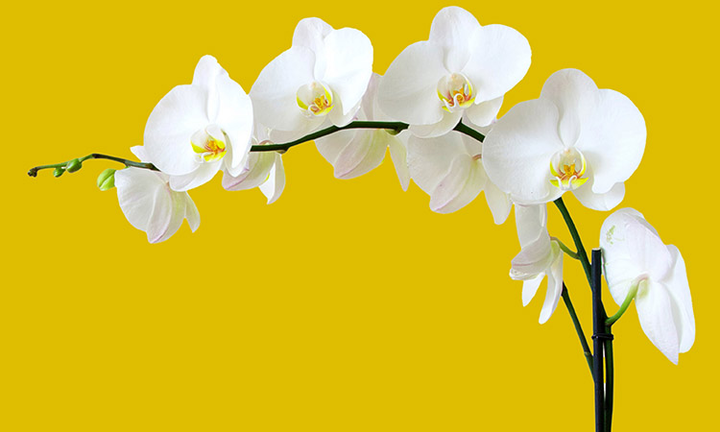
Caring for orchid plants is easy once you learn how to grow them. In fact, they require little care providing all of their basic needs are met and they are placed in a location offering the right amount of light, the right temperature and the correct humidity. These remarkable blooms are available in an assortment of colors, sizes, and varieties and are an ideal option for accent plantings and indoor use. They add instant vibrancy to both home and office décor and are incredibly popular in many regions of the world.
How to Care for Orchids
To help your orchid thrive, use moist, well-drained soil and a type of growing media, such as charcoal, fir bark, redwood, corks, peat moss, sand, potting soil or rocks. A basic mix for growing orchids generally consists of fir bark, coarse perlite, and sphagnum moss. When using bark, think about the type of orchid you are planting.
In most cases, the grade of the bark is dependent on the orchid species. For example, Phalaenopsis Orchids prefer coarse bark, while Cattleyas enjoy medium bark and young orchid plants thrive in a finer bark. If you’re unsure what bark to use for your orchid, speak with staff at your local garden center or florist or enquire online.
Orchid plants require shallow planting and bloom best when placed in an east to south-facing window or room. They enjoy bright, indirect light. The inadequate light will result in poor flowering, while too much light can lead to leaf scorch.
It’s wise to consider temperature when growing orchids, as it plays an important part in orchid care.
They can withstand both cool and warm temperatures throughout their normal growing season, however, prefer a temperature that is 15°C cooler at night than during the day. Choosing the right environment will ensure the orchid blooms sufficiently.
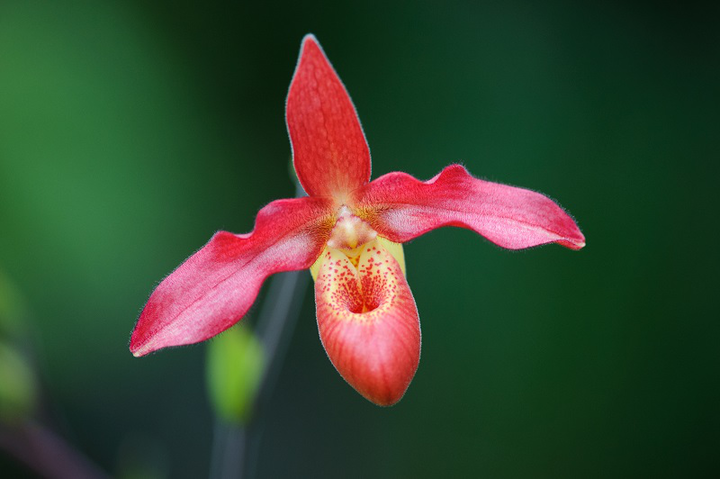
Indoor Orchid Care Tips
Orchids require ample water but should be allowed to dry out between watering. One way to check that your orchid has enough water is to test the soil with your finger by pressing about an inch into the growing media. If it’s dry, water the orchid, otherwise check the soil again at a later date.
Indoor orchid plants also require sufficient humidity. For best results, this should be around fifty to seventy percent. There are a number of ways to increase the humidity in your home, one of which includes placing a water-filled saucer or tray of pebbles beneath the orchid plant. You can also mist the plants daily, or use a humidifier.
When it comes to fertilizing your orchid plants, it’s wise to do this weekly or bi-weekly, especially when they are producing new growth. You can decrease this to monthly or bi-monthly once they are established. When the plants are dormant, discontinue fertilizing your orchid altogether.
Additional Orchid Care Tips
There are a number of other orchid care tips to take into consideration, one of which includes repotting the plants. This is often done every other year. If your orchids suddenly cease from blooming, yet have suitable light, temperature and humidity, repotting may be required sooner. This could also be down to diseases and pests, which is why it’s important to check your plant regularly. Common orchid diseases include scale, mealy bugs, and aphids. In most cases, these can be washed off with insecticidal soap.
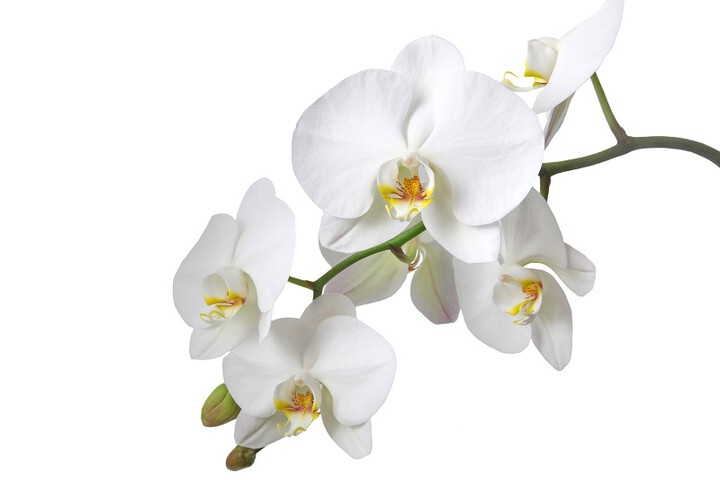
Orchid Types, Varieties and Family
Those who are familiar with orchids will likely have noticed just how diverse a plant they are. Each species of flower has unique characteristics and care requirements, which is why it’s always a good idea to do your research when it comes to investing in these plants. You’ll find some are more suited to certain conditions than others, so you may even be able to find one that is perfect for your home.
Epidendrum Genus
This large genus boasts more than 1000 pure species and an array of hybrids. The flowers are small in size, despite the plant’s bulk, and this particular orchid requires extremely bright light to thrive. Those who grow this species of orchid indoors will often use supplemental grow lights to encourage good development.
Brassavola Orchid: This is a great orchid to grow both indoors and out. It boasts a strong fragrance, which means most people will smell it before they see it. The perfume is released only at night and the flowers are white in hue and are often dependent on moths for pollination.
Encyclia Orchids
Often nicknamed cockleshell orchids, this species is able to thrive when placed on an orchid mount. This helps to replicate the epiphytic growing conditions seen in the wild. Some horticulturists say this species resembles an octopus, due to its dangling petals and sepals. It doesn’t produce a fragrance, yet can bloom for several consecutive months.
Cattleya Orchid
Also known as the swan orchid, this elegant, inflorescence space boasts an array of male flowers, which resemble a swan’s neck. An impressive 30 spicily scented flowers may grow on just the one stem. They have been extensively hybridized, which has led to a large variety of hues and forms is available. A number of these orchids are very unique in style and boast attractive freckles, streaks, or other bicolor features.
Dendrobium Orchid
This plant houses an abundance of top-heavy blooms and as such, often requires staking. With over 1000 species in this orchid’s genus, the Dendrobium orchid is easily categorized. The most common assortments feature white, yellow, or lavender blooms.
Cymbidium Orchids
These orchids house smaller flowers than the majority of orchid varieties, yet an abundance of flower spikes. They’re a great option for those who are growing and caring for orchids for the first time. They come in shades of lime green ‘Chica’, yellow and red ‘the Show-off’ or bright pink ‘Frae’.
Catasetum Orchid
When the leaves of this orchid begin to turn a shade of yellow and fall, don’t panic; as this deciduous orchid loses its leaves naturally during the winter dormancy. There is a number of species in existence and all are slightly different in style; although one feature they all have in common is their ability to produce male and female flowers, which bear few similarities to one and other. The male flowers boast an anatomical trigger that forcefully expels pollen onto visiting bees.
Meaning of Orchids
The orchid has been celebrated since ancient times. It symbolizes, beauty, love, fertility, thoughtfulness, refinement, and charm. As a result, orchids are often given as gifts to mark special occasions such as weddings, anniversaries and birthdays.
The ancient Greeks believed orchids were a symbol of virility and described orchids with large tuberous roots as male children, while orchids with small tubers symbolized female children.
Etymological Meaning of the Orchid Flower
Orchids (also known as Orchidaceae) take their name from the Greek word orchis. Phalaenopsis orchids, universally referred to as moth orchids, were named by the Swedish Naturalist Peter Osbeck. He mistakenly thought they were a cluster of moths when he spotted them in a nearby field and the name has stuck ever since.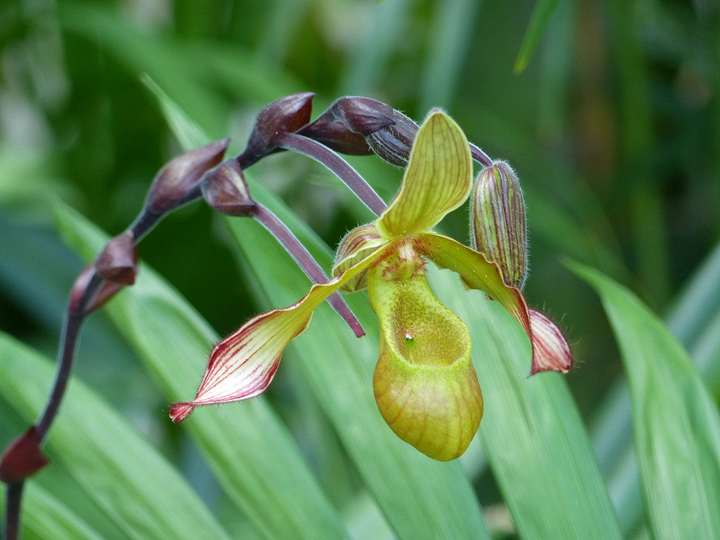
Orchids Throughout History
Orchids have been used for many different things throughout history. The Aztecs mixed these species of plant (particularly the vanilla orchid) with chocolate to create a tasty elixir. This mixture was said to stimulate both power and strength. The Victorians, on the other hand, thought of them as a luxurious object and one that promoted a refined taste.
Common Orchid Problems
Orchids, like a number of plant species, are affected by pests and diseases, including small sap-sucking diapsid scale insects. Properly identifying the source of the problem is the key to understanding how to treat your orchids and remove the disease. These critters cover the leaves and stems of glasshouse orchids. They come in the shape of flat rounded whitish brown insects that measure around 2mm in length. Other types of diapsid look narrow in appearance and are covered with a fluffy white wax. They are often found at the base of the leaves in a cluster.
Heavy infestations can affect the health and lifespan of your orchid and also look unsightly.
Controlling Pests and Diseases
Diapsid scale insects can be problematic to control, and if the plant is relentlessly infested, replacing the plant in question may be the only option.
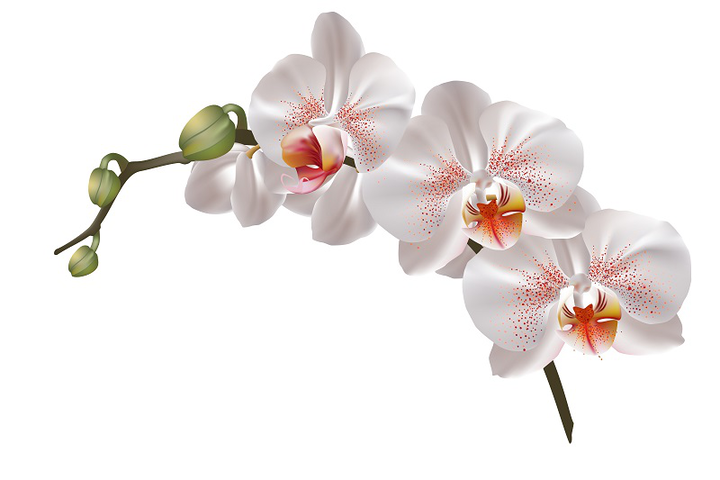
Non-chemical Control
For light infestations, you may consider physically squashing or removing scales. Alternatively, leave it to nature – Chilocorus nigritusm, which comes in the form of a small black ladybird, can help to remove these pests from the plant and is available from certain suppliers of biological control.
Chemical Control
Spraying newly hatched crawlers with a chemical solution will help to treat the problem. It’s important to note that even dead scales can remain resolutely attached to the plants, which is when they need to be removed by hand. It’s wise to ensure new growth isn’t affected by any pests or diseases, as it’s unlikely they will survive.
If you are less keen on using chemicals to treat the problem, opt for organic pesticides instead. These often contain plant oils, extracts, and fatty acids and are readily available at garden centers and online. They tend to have a short perseverance, which means they will need to be applied more frequently and often to the underside of the orchid’s leaves, as well as the main body of the plant.
One tip to keep in mind is to not spray near plants in flower, as this may harm pollinating insects. You may also wish to ensure that pets are kept away from any plants that are sprayed, just in case they react to any of the products used.
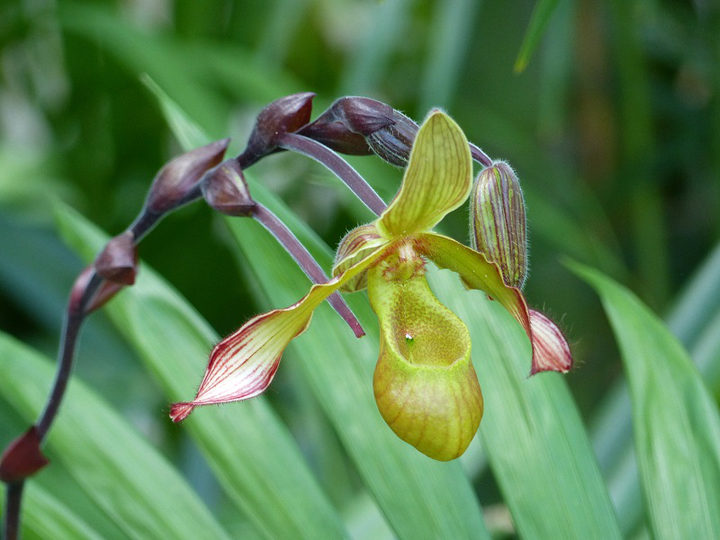
Where to Buy Orchids and what to Look Out
Orchids can be purchased from either your local garden center or nursery, or alternatively, online. When buying orchids, it’s important to keep a few factors in mind to ensure your plant is healthy and that it will blossom over time.
When buying orchids, it’s wise to look at the pot size, the number of flowers and buds per stem, and the appearance of the plant. It’s also a good idea to thoroughly check the plant for pests and diseases. The flowers tend to suffer from Botrytis (a grey mold), which can greatly hinder the decorative value of the plant as a whole.
If the blooms or foliage are damaged, it’s best to avoid buying the plant. This can take place if the plant is placed into storage or transported from one place to another.
The recommended storage and transport temperature is 12°C to 16°C. Similarly, if there are wilted flowers on the plant or buds have shed or withered, the orchid in question is best avoided. If the plant has been exposed to ethylene (an aging hormone) this can cause the buds to shed and flower growth to accelerate.
If the plant is too wet or too dry, it will often showcase yellow leaves and may be attacked by brown scale, mealybug and scale insects, which are extremely hard to eliminate.
Cold damage (which comes in the shape of dark patches on the leaves) can be caused by low temperatures – plants are often sold sleeved to prevent this from occurring. If buying from a garden center, it’s wise to check the ripeness of the plant, particularly when purchasing orchids in the winter months. Plants that aren’t ripe enough will struggle to develop when there is less daylight.
With thousands of species of orchid to choose from, it’s important to pick the one that’s right for you and the environment you’re able to offer it – be it indoors or outdoors, in a room that offers high humidity or a room with little light. With the right care, orchids have a great life expectancy and will add an instant injection of color and style to both the home and the office.
They’re also a very elegant plant and one that is now available in a variety of hues – meaning there is an orchid to suit all tastes!